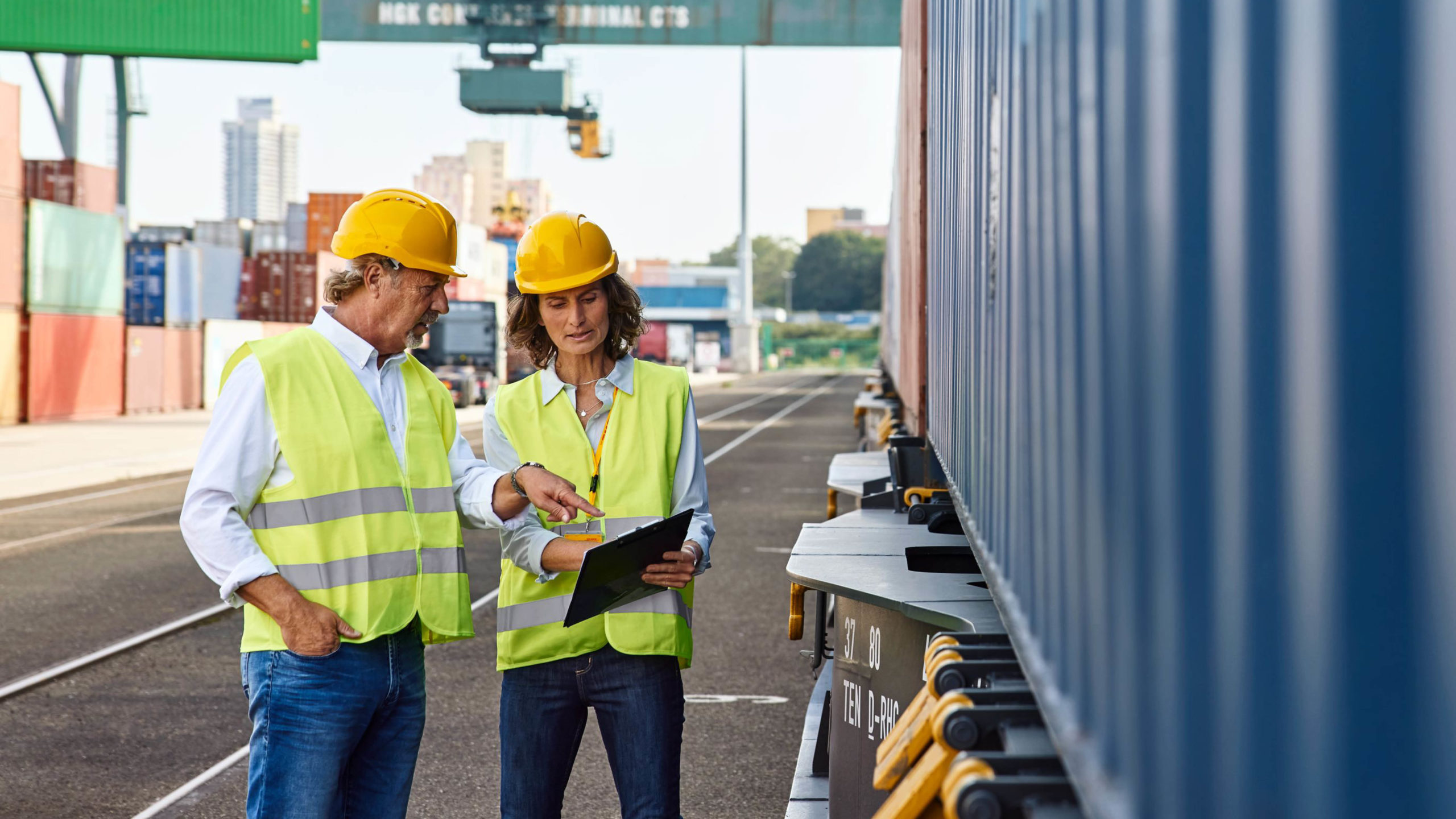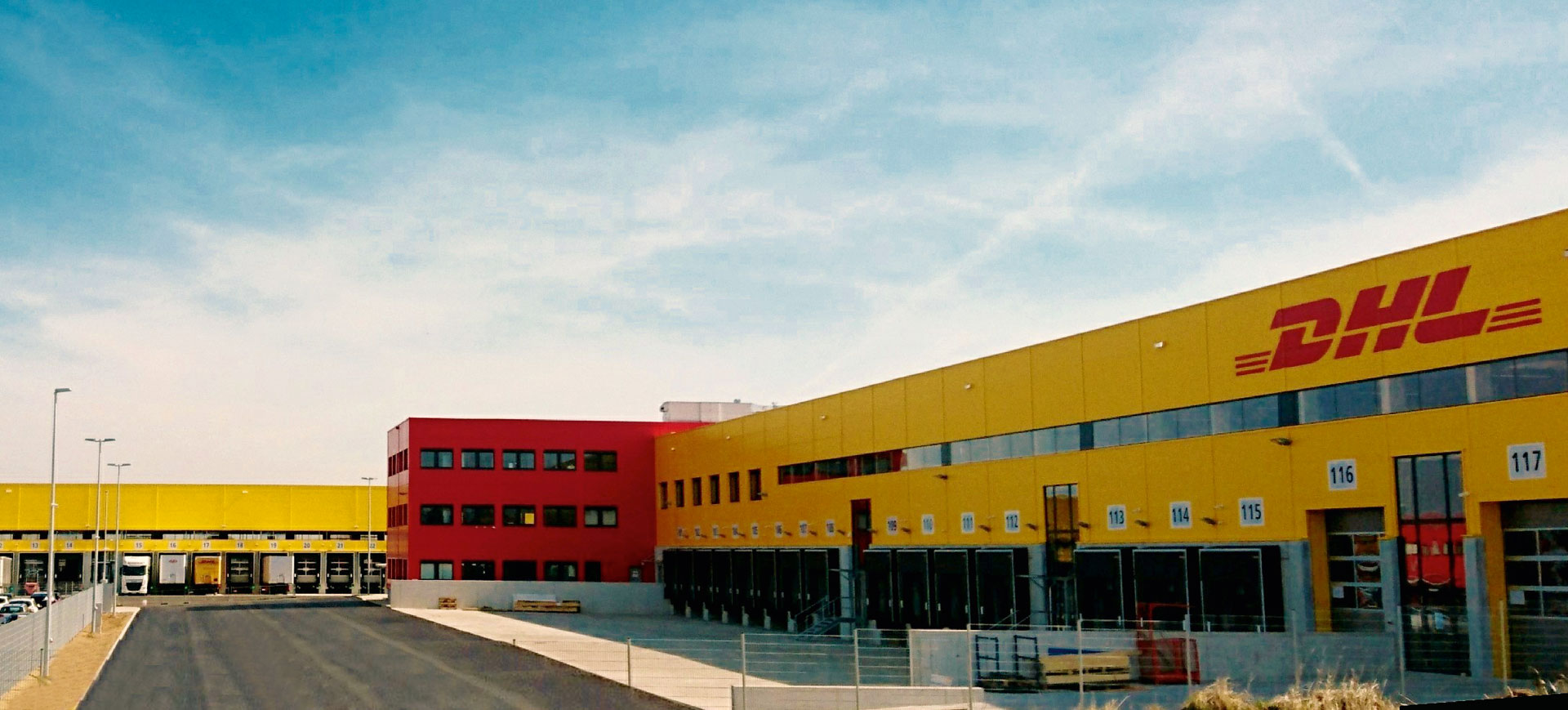
Studies by the World Economic Forum (WEF) indicate that logistics and transport account for around 5.5% of global CO2 emissions, and the trend is rising. New and innovative technologies are needed to counter climate change and achieve climate neutrality in the long term. In the medium term, however, existing, comparatively sustainable modes of transport can be used and expanded. One of these is rail.
Rail Freight as a Sustainable Alternative to Road Freight
Today, e-mobility is already the standard in rail freight transport. This means that no CO2 emissions are incurred during the transport itself. The situation is still different in power generation, where fossil fuels are involved. Fortunately the share of renewable energies is growing here and its expansion is being promoted. In the future, and probably sooner than for road freight, it will be possible to transport goods by rail in a completely climate neutral way. Particularly over long distances, rail freight transport thus has a decisive advantage over other types of transport.
Currently, rail freight emits 15% less CO2 than road freight. If only green electricity is consumed in the future, emissions will drop to zero. As Deutsche Post DHL Group, we are pursuing the goal of climate neutrality by 2050 – and are relying on various short-, medium- and long-term technologies to achieve this. Rail freight transport plays a crucial role in this.
Rail Freight at a Glance
But to start from the beginning: What exactly is meant by rail freight, what are the special features of rail as a mode of transport, and for whom is it best suited? Rail freight refers to the transport of goods by rail using so-called freight trains and, along with road freight, is the common form of transporting goods over land. When leaving the solid ground, the goods have to be reloaded to a ship or aircraft.
Speaking of reloading: freight trains rely on rails. But many companies, warehouses, or distribution points are not connected to the rail network, while they are virtually always connected to the road. For rail freight, this means that trucks are often involved when goods are transported by freight trains. Trucks have to take the goods from the consignor to the distribution point, where they are reloaded onto the train – and finally, once they have reached their destination, onto another truck that takes them to the consignee.
As a result, those who opt for rail generally depend on intermodal transport – that is the use of several modes of transport for just one transport unit.
Freight Types in Comparison
Intermodal operations can certainly complicate the organization of a transport by rail. On the other hand, rail freight scores in different areas: it allows large load volumes to be moved with the best eco-balance of all modes of transport. Road freight, on the contrary, impresses with the greatest possible flexibility and is also comparatively cost-effective. And finally, those who need to travel long distances rely on ships and planes.

The fastest way of transportation is air freight – shipping by air. However, with air freight, cargo volume is limited and the cost is the highest. Sea transport, on the other hand, allows for very large volumes and very bulky or heavy goods. In turn, sea transport is the slowest of all and can only be considered if there is sufficient lead time.
Advantages of Rail Freight
It is not without reason that the rail is becoming more and more popular as a means of transportation. Rail freight performs particularly well in terms of eco-balance – a factor that is becoming increasingly important. But there is even more that makes rail freight stand out.
Sustainability
The standard operation of freight trains is already electric. Although the first electric trucks are also being used occasionally in road freight, road logistics is still a far cry from regular operation with electric trucks. While the movement of the freight train no longer causes CO2 emissions, this is not yet the case for the generation of the necessary electricity. But that is soon to change. More and more electricity is being generated from renewable sources, further optimizing the railroad’s eco-balance. Emission-free rail freight seems to be within reach.
Capacity
Compared to a truck, a train can transport considerably more goods: up to 40 complete loads are feasible. Customers have the option of choosing between Full Container Load (FCL) for complete loads and Less-Than-Container-Load (LCL) for partial loads. On long routes, companies can achieve excellent cost savings thanks to the large capacities and flexible booking options.
Future Viability
Rail as a carrier benefits from its good eco-balance. That is why policymakers at EU and regional level are working on new incentives for rail freight transport – such as reducing charges for track use. Technological progress and digitization are also constantly increasing the efficiency of rail: automated or optimized dispatch, inspections, and the assignment of cranes are just the first, but promising, ways to minimize time and costs in rail freight in the future.
Moreover, the railroad is considered to be very reliable. Delays due to traffic jams or accidents are more than rare, the goods can be very well protected, and the shortage of personnel among train drivers is significantly lower than among truck drivers.
Disadvantages of Rail Freight
Switching to rail freight, however, can involve some challenges. But these diminish the more goods are transported and the longer the distances are.
Infrastructure
Usually, transport by rail requires the additional use of trucks to get the goods from the distribution point to the actual destination. Most companies are simply not connected to the rail network, but always to the road network. In addition, access to rail terminals is limited and non-uniform power supply and track widths pose further challenges.
Capacity
To achieve a good cost-benefit ratio in rail freight, a high utilization rate is necessary. If the transport volume is not that large, road freight is the more efficient choice.
Access
The rail infrastructure for freight transport is owned by a small number of companies. In Germany, for example, DB Netz is the largest operator, in France there is SNCF Réseau, ProRail in the Netherlands, or Network Rail in the UK. Anyone who wants to move goods by rail is dependent on these companies. Due to the limited infrastructure, longer lead times are required in rail freight and flexibility is lower than on the road.
The disadvantages of rail freight transport become less significant the more goods are transported and the greater the distances to be covered.
Conclusion: Is Rail Freight Suitable for Me?

Rail freight transport is considered a sustainable alternative to road freight. However, certain conditions must be met for rail freight to be just as economically sustainable and for the shift to intermodal transport to pay off.
Preconditions for efficient rail freight utilization:
- A minimum of five FCL are transported each week.
- The transport distances are usually longer than 750 km.
- There is sufficient lead time for the transports.
Even if not all of the above requirements are met, economically viable rail freight transports may still be possible in specific cases. With a rail freight solution tailored to your individual needs, rail freight transport can become a sustainable, efficient, and future-proof alternative for you – assuming you are interested in long-term cooperation, can provide accurate forecasts of volumes and connections, and the transport of goods is possible in both directions, there and back.
As Deutsche Post DHL Group, we are pursuing the goal of zero emissions by 2050. One medium-term solution for achieving this goal is rail freight. As an experienced provider in rail freight transport, we will be happy to advise you on your individual solution.



